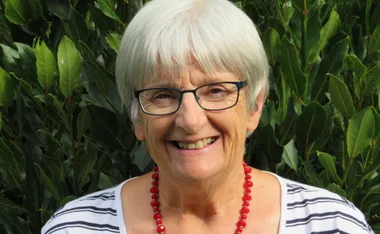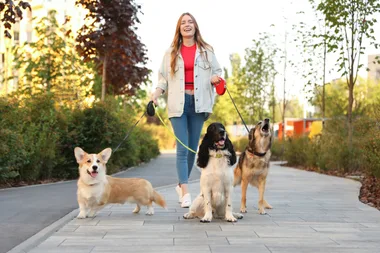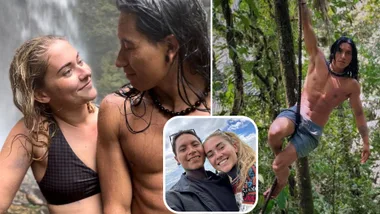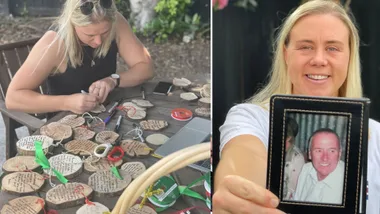Following the 2017 Uluru Statement from the Heart, the Australian Government has announced that Australians will take part in a referendum to vote on a proposed Aboriginal and Torres Strait Islander Voice to Parliament.
On 19 June, 2023, the referendum bill passed in the Senate. As the referendum must be held no later than six months following the bill’s passing, the referendum on the Voice will officially take place before the end of this year.
Scroll down for an explainer on the referendum, including the positions of both the ‘Yes’ and ‘No’ campaigns.

The Voice referendum will take place before the end of this year.
(Image: Getty)What is the Voice to Parliament?
In May 2017, the Uluru Statement from the Heart was presented and signed by over 250 First Nations representatives from across Australia.
The statement directly addressed the Australian people, and issued a call to action.
“We seek constitutional reforms to empower our people and take a rightful place in our own country. When we have power over our destiny, our children will flourish. They will walk in two worlds and their culture will be a gift to their country. We call for the establishment of a First Nations Voice enshrined in the Constitution,” read the Statement.
The Uluru Statement from the Heart also called for the establishment of a Makarrata Commission to “supervise a process of agreement-making between governments and First Nations and truth-telling about our history.”
Minister for Indigenous Australians Linda Burney provided further information on the key policy focus areas of the Voice, telling the National Press Club, “I will ask the Voice to consider four main priority areas: health, education, jobs, and housing.”
Burney further outlined that the Voice would be an “independent representative advisory body… chosen by local communities for local communities.”
The Voice to Parliament will provide First Nations people with an enshrined voice. This Voice will provide First Nations people with a guaranteed platform to discuss and inform policy, projects, and legislation that will have an impact on the lives of Aboriginal and Torres Strait Islander people.

The Uluru Statement from the Heart was given on the 50th anniversary of the 1967 Referendum.
(Image: Getty)Why is the Voice to Parliament important?
It is important that the Voice to Parliament is enshrined within the Australian Constitution, as changes to the Constitution are unable to be removed by any future government without another referendum.
This protection under the Constitution will ensure that the Voice to Parliament has longevity and a permanent place in discussions.
The Voice to Parliament will also build upon the campaign achievements of the 1967 Referendum, which saw the Australian Constitution amended to allow the Federal Government power to make special laws for all Australians regardless of race, and to recognise Aboriginal and Torres Strait Islander people as part of the Australian population count.

90.77% of Australians voted Yes in the 1967 Referendum.
(Image: Getty)What is the 2023 Referendum asking?
The referendum will ask all Australians over the age of 18 to decide whether or not they agree to alter the Constitution to recognise First Nations people through the establishment of an Aboriginal and Torres Strait Islander Voice to Parliament.
The exact wording of the question will be as follows:
“A Proposed Law: to alter the Constitution to recognise the First Peoples of Australia by establishing an Aboriginal and Torres Strait Islander Voice. Do you approve this proposed alteration?”
When will the referendum be held?
The Australian Government has yet to decide on a set date for the referendum however, the chosen date will be subject to several legal constraints.
Legally, the referendum cannot be held within two months of the bill passing the Senate. Under this limitation, the referendum cannot be held until late August 2023 at the earliest.
The Federal Government must also ensure that the referendum is held within six months of the bill passing, with Prime Minister Anthony Albanese hinting that the referendum will be held some time between October to December of this year.

The Uluru Statement from the Heart also proposes a commitment to truth-telling to assist in acknowledging and understanding First Nations history.
(Image: Getty)What is the ‘Yes’ campaign?
There are a number of groups campaigning across Australia for the ‘Yes’ campaign, with the primary being Yes23 and Together, Yes.
Yes23 is led by the Australians for Indigenous Constitutional Recognition. Yes23’s core campaign message is that “Aboriginal and Torres Strait Islander people know and understand the best way to deliver real and practical change in their communities. When they have a say through a Voice, we can finally start to close the gap that still exists between Indigenous and non-Indigenous Australians on practical issues like life expectancy, educational outcomes, and employment.”
Together, Yes’ campaign seeks to spark open and honest conversation about the Voice, with the campaign utilising a ‘kitchen table’ conversation model to encourage greater discussion about the referendum.
The campaign’s overall aims are to “help achieve a strong Yes vote for an Indigenous Voice to Parliament; enable people across the nation to participate in Kitchen Table Conversations built on respect, safety, listening, and learning, and act as a counter and unifying force against wilful confusion, negativity and racism.”
Together, Yes will be facilitating these conversations around the country from May 2023 onwards.
What does the ‘Yes’ pamphlet argue?
The official ‘Yes’ pamphlet published by the Australian Electoral Commission (AEC) outlines the fundamentals of the ‘Yes’ campaign.
According to the pamphlet, the three core principles behind the ‘Yes’ vote have been outlined as follows;
Recognition:
- Recognising Aboriginal and Torres Strait Islander people in our Constitution by paying respect to 65,000 years of culture and tradition.
Listening
- Listening to advice from Aboriginal and Torres Strait Islander people about matters that affect their lives, so governments make better decisions.
Better Results
- Making practical progress in Indigenous health, education, employment, and housing, so people have a better life.
The ‘Yes’ pamphlet also provides further information regarding the structure and implementation of the Voice, stating the Voice “will include Indigenous Australians from every state and territory, the Torres Strait Islands, and representatives from the regions and remote communities.”
“Members of the Voice will be chosen by Aboriginal and Torres Strait Islander people in their local area and [will] serve for a fixed period.”
The pamphlet also argues that voting ‘Yes’ is an important act of unity and by achieving Constitutional recognition, the Australian Government can more effectively work with Aboriginal and Torres Strait Islander communities to close the gap in various areas such as life expectancy, infant mortality, education and employment opportunity, and mental health.

The ‘Yes’ and ‘No’ campaigns official pamphlets have been released.
(Image: Getty)What is the ‘No’ campaign?
There are a number of groups leading the No campaign for the referendum, with the primary being Recognise a Better Way.
Recognise a Better Way, headed by former politician Warren Mundine, views the referendum as a way through which “the Prime Minister is trying to impose on Australians a shadow government based on race.” The group also do not support the treaty and truth-telling commitments outlined in the Uluru Statement from the Heart, claiming that the Voice would not adequately address the various issues and needs of First Nations communities.
The group’s official position paper does support a change in the Constitution to recognise First Nations people, but suggests it should form part of a preamble.
The group also states that “The Voice will simply reinforce the mistakes of the past by giving a greater voice to the architects of those mistakes, Aboriginal leaders,” with their position paper concluding with “Aboriginal people do not need more voices; they need a way into the wider society.”
The Recognise a Better Way campaign officially launched in April 2023 in Tamworth, with One Nation leader Pauline Hanson, Nationals MP Barnaby Joyce, and broadcaster Alan Jones expressing their support.
What does the ‘No’ pamphlet argue?
The official ‘No’ pamphlet published by the Australian Electoral Commission (AEC) outlines the fundamentals of the ‘Yes’ campaign.
The pamphlet states an overarching sentiment of “If you don’t know, vote no,” and argues that the Voice Referendum would be “divisive and permanent.”
The core principles of the ‘No’ pamphlet are as follows:
Risky
- We all want to help Indigenous Australians in disadvantaged communities however, this Voice is not the answer and presents a real risk to our system of government.
Unknown
- No details have been provided on how members of the Voice would be chosen or how it would operate… We don’t know how it will work, we don’t know who will be on it, but we do know it will permanently divide Australians.
Divisive
- Enshrining a Voice in the Constitution for only one group of Australians means permanently dividing our country. It creates different classes of citizenship through an unknown bofy that has the full force of the Constitution behind it.
Permanent
- Putting a Voice in the Constitution means it’s permanent. We will be stuck with negative consequences.
The ‘No’ pamphlet also argues that a ‘Yes’ vote “opens the door for activists,” by taking “a first step to reparations and compensation and other radical changes,” such as abolishing Australia Day and/or changing the date.
The case also argues the potential economic implications of the Voice, arguing that “we don’t know how much additional funding would be allocated to this Voice.”









